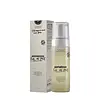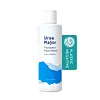What's inside
What's inside
 Key Ingredients
Key Ingredients

No key ingredients
 Benefits
Benefits

 Concerns
Concerns

 Ingredients Side-by-side
Ingredients Side-by-side

Aloe Barbadensis Leaf Juice
Skin ConditioningWater
Skin ConditioningDisodium Cocoyl Glutamate
CleansingCoco-Glucoside
CleansingLauryl Glucoside
CleansingGlycerin
HumectantCaprylyl/Capryl Glucoside
CleansingPolyglyceryl-10 Isostearate
Skin ConditioningBetaine
HumectantXylitol
HumectantTrehalose
HumectantPentylene Glycol
Skin ConditioningLevulinic Acid
PerfumingSodium Levulinate
Skin ConditioningInulin
Skin ConditioningRibose
HumectantGlyceryl Caprylate
EmollientHydrolyzed Wheat Protein
Skin ConditioningSodium PCA
HumectantLactic Acid
BufferingCaprylic/Capric Triglyceride
MaskingSodium Dilauramidoglutamide Lysine
HumectantUndecane
EmollientTridecane
PerfumingAmaranthus Caudatus Seed Extract
Skin ConditioningLaminaria Ochroleuca Extract
Skin ConditioningCitrus Paradisi Peel Oil
MaskingCitrus Reticulata Peel Oil
MaskingGlyceryl Glucoside
HumectantCocoglycerides
EmollientCoco-Caprylate
EmollientLimonene
PerfumingAloe Barbadensis Leaf Juice, Water, Disodium Cocoyl Glutamate, Coco-Glucoside, Lauryl Glucoside, Glycerin, Caprylyl/Capryl Glucoside, Polyglyceryl-10 Isostearate, Betaine, Xylitol, Trehalose, Pentylene Glycol, Levulinic Acid, Sodium Levulinate, Inulin, Ribose, Glyceryl Caprylate, Hydrolyzed Wheat Protein, Sodium PCA, Lactic Acid, Caprylic/Capric Triglyceride, Sodium Dilauramidoglutamide Lysine, Undecane, Tridecane, Amaranthus Caudatus Seed Extract, Laminaria Ochroleuca Extract, Citrus Paradisi Peel Oil, Citrus Reticulata Peel Oil, Glyceryl Glucoside, Cocoglycerides, Coco-Caprylate, Limonene
Aloe Barbadensis Leaf Juice
Skin ConditioningLauryl Glucoside
CleansingCoco-Glucoside
CleansingDisodium Cocoyl Glutamate
CleansingSodium Lauroamphoacetate
CleansingCaprylyl Glucoside
CleansingInulin
Skin ConditioningGlyceryl Laurate
EmollientGluconolactone
Skin ConditioningSodium Lauroyl Glutamate
Xylitylglucoside
HumectantAnhydroxylitol
HumectantXylitol
HumectantOryza Sativa Extract
AbsorbentCamellia Sinensis Leaf Extract
AntimicrobialRosmarinus Officinalis Leaf
Skin ConditioningLavandula Intermedia Oil
MaskingLamium Album Flower Water
Skin ConditioningPicea Glehnii Needle Oil
MaskingPseudotsuga Menziesii Branch/Leaf Oil
PerfumingCitrus Paradisi Peel Oil
MaskingCitrus Aurantifolia Peel Oil
MaskingArtemisia Argyi Leaf Oil
MaskingJuniperus Virginiana Wood Oil
PerfumingTanacetum Annuum Flower Oil
MaskingVetiveria Zizanoides Root Oil
MaskingMentha Viridis Leaf Oil
AstringentPogostemon Cablin Leaf Oil
MaskingWater
Skin ConditioningVaccinium Myrtillus Bud Extract
AntioxidantSaccharum Officinarum Extract
MoisturisingCitrus Aurantium Dulcis Fruit Extract
MaskingCitrus Limon Fruit Extract
MaskingAcer Saccharum Extract
Skin ConditioningLeuconostoc Ferment Filtrate
AntimicrobialSuperoxide Dismutase
AntioxidantSoybean Peroxidase
AntioxidantSodium Phytate
PCA Glyceryl Oleate
EmollientCitric Acid
BufferingSodium Benzoate
MaskingAloe Barbadensis Leaf Juice, Lauryl Glucoside, Coco-Glucoside, Disodium Cocoyl Glutamate, Sodium Lauroamphoacetate, Caprylyl Glucoside, Inulin, Glyceryl Laurate, Gluconolactone, Sodium Lauroyl Glutamate, Xylitylglucoside, Anhydroxylitol, Xylitol, Oryza Sativa Extract, Camellia Sinensis Leaf Extract, Rosmarinus Officinalis Leaf, Lavandula Intermedia Oil, Lamium Album Flower Water, Picea Glehnii Needle Oil, Pseudotsuga Menziesii Branch/Leaf Oil, Citrus Paradisi Peel Oil, Citrus Aurantifolia Peel Oil, Artemisia Argyi Leaf Oil, Juniperus Virginiana Wood Oil, Tanacetum Annuum Flower Oil, Vetiveria Zizanoides Root Oil, Mentha Viridis Leaf Oil, Pogostemon Cablin Leaf Oil, Water, Vaccinium Myrtillus Bud Extract, Saccharum Officinarum Extract, Citrus Aurantium Dulcis Fruit Extract, Citrus Limon Fruit Extract, Acer Saccharum Extract, Leuconostoc Ferment Filtrate, Superoxide Dismutase, Soybean Peroxidase, Sodium Phytate, PCA Glyceryl Oleate, Citric Acid, Sodium Benzoate
 Reviews
Reviews

Ingredients Explained
These ingredients are found in both products.
Ingredients higher up in an ingredient list are typically present in a larger amount.
Aloe Barbadensis Leaf Juice comes from leaves of the aloe plant. Aloe Barbadensis Leaf Juice is best known for helping to soothe sunburns. It is also anti-inflammatory, moisturizing, antiseptic, and can help heal wounds.
Aloe is packed with good stuff including Vitamins A, C, and E. These vitamins are antioxidants, which help fight free-radicals and the damage they may cause. Free-radicals are molecules that may damage your skin cells, such as pollution.
Aloe Barbadensis Leaf Juice also contains sugars. These sugars come in the form of monosaccharides and polysaccharides, folic acid, and choline. These sugars are able to help bind moisture to skin.
It also contains minerals such as calcium, 12 anthraquinones, fatty acids, amino acids, and Vitamin B12.
Learn more about Aloe Barbadensis Leaf JuiceCitrus Paradisi Peel Oil is the volatile oil expressed from the peel of the Grapefruit, Citrus paradisi, Rutaceae.
The term 'fragrance' is not regulated in many countries. In many cases, it is up to the brand to define this term. For instance, many brands choose to label themselves as "fragrance-free" because they are not using synthetic fragrances. However, their products may still contain ingredients such as essential oils that are considered a fragrance.
Coco-Glucoside is a surfactant, or a cleansing ingredient. It is made from glucose and coconut oil.
Surfactants help gather dirt, oil, and other pollutants from your skin to be rinsed away.
This ingredient is considered gentle and non-comedogenic. However, it may still be irritating for some.
Learn more about Coco-GlucosideWe don't have a description for Disodium Cocoyl Glutamate yet.
Inulin is a polysaccharide (carbohydrate) with prebiotic and antioxidant properties.
The majority of inulin is extracted from chicory, but can also be obtained from other plants such as garlic, onion, asparagus, and sugarcane.
Studies show inulin may help with controlling your skin's natural microbiota when applied topically.
The antioxidant potential of inulin varies depending on the source.
Learn more about InulinLauryl Glucoside sugar- and lipid-based cleansing agent. It is created from glucose and lauryl alcohol.
This ingredient is a surfactant, making it easier to rinse oil, dirt, and other pollutants away.
A British study found lauryl glucoside to cause skin sensitivity for some people. We recommend speaking with a professional if you have concerns.
Other names for this ingredient include "Lauryl Polyglucose", "Lauryl glycoside", and "D-Glucopyranoside".
Learn more about Lauryl GlucosideWater. It's the most common cosmetic ingredient of all. You'll usually see it at the top of ingredient lists, meaning that it makes up the largest part of the product.
So why is it so popular? Water most often acts as a solvent - this means that it helps dissolve other ingredients into the formulation.
You'll also recognize water as that liquid we all need to stay alive. If you see this, drink a glass of water. Stay hydrated!
Learn more about WaterXylitol is a humectant and prebiotic. It can help with dry skin.
In studies, xylitol has been shown to improve dry skin. It decreased transepidermal water loss, or when water passes through the skin and evaporates. Xylitol also showed to help improve the biomechanical properties of the skin barrier.
The prebiotic property of xylitol may also help reinforce our skin's natural microbiome. Having a healthy microbiome prevents infection by bad bacteria and helps with hydration.
As a humectant, Xylitol helps draw moisture from both the air and from deeper skin layers. This helps keep skin hydrated.
Xylitol is a sugar alcohol and commonly used as a sugar substitute. It is naturally occurring in plants such as strawberries and pumpkin.
Learn more about Xylitol